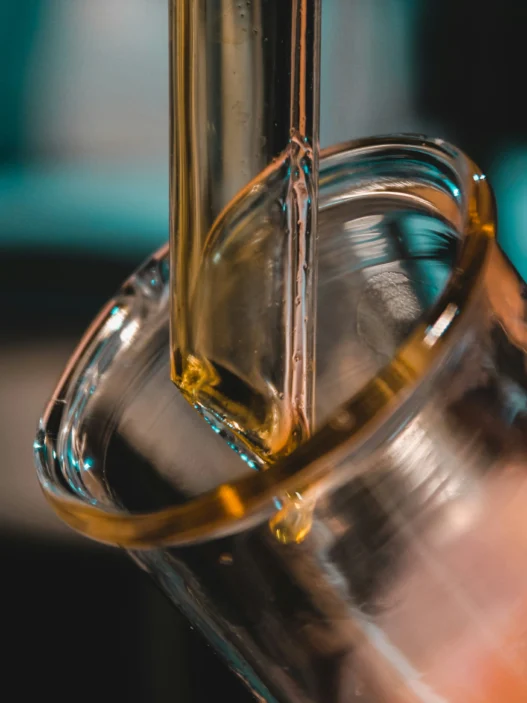1-Methylnaphthalene, a chemical compound commonly used in the manufacturing of insecticides, lubricants, and coatings, plays a crucial role in everyday life. It is often found in consumer products such as mothballs and air fresheners, highlighting its widespread application in household items. Additionally, 1-Methylnaphthalene is utilized in the automotive industry for the production of engine oils, further emphasizing its significance in various sectors. Overall, this compound’s versatile properties make it an essential component in numerous products that we interact with on a daily basis.
Table of Contents:
- 💡 Commercial Applications
- ⚗️ Chemical & Physical Properties
- 🏭 Production & Procurement
- ⚠️ Safety Considerations
- 🔬 Potential Research Directions
- 🧪 Related Compounds
💡 Commercial Applications
1-Methylnaphthalene, a chemical compound derived from naphthalene, finds various commercial and industrial applications. It is used as a solvent in the production of pesticides, dyes, and paints. Its low volatility and high boiling point make it suitable for applications requiring a stable and long-lasting solvent.
Furthermore, 1-Methylnaphthalene is utilized as an additive in lubricating oils and greases due to its ability to improve lubricant properties and reduce friction. In the industrial sector, it is employed in the manufacture of plastics, rubber products, and electrical insulation materials. Its chemical properties make it a valuable component in enhancing the performance of various industrial products.
The medical field also sees applications of 1-Methylnaphthalene in drug formulation and medication. It is occasionally used in pharmaceuticals as an excipient for drug delivery systems. Its solubility characteristics and inert nature enable it to be incorporated into drug formulations to enhance drug stability and bioavailability. Researchers continue to explore its potential applications in the pharmaceutical industry for improved drug delivery methods.
⚗️ Chemical & Physical Properties
1-Methylnaphthalene is a colorless liquid with a sweet odor. It is commonly used as a solvent in various industrial applications due to its aromatic properties.
The molar mass of 1-Methylnaphthalene is approximately 142 g/mol, with a density of around 0.977 g/cm³. Compared to common food items such as sugar (molar mass of 342 g/mol) and water (density of 1.00 g/cm³), 1-Methylnaphthalene has a lower molar mass and density.
The melting point of 1-Methylnaphthalene is around -24 °C, while the boiling point is approximately 241 °C. Compared to common food items such as butter (melting point of 32-35 °C) and water (boiling point of 100 °C), 1-Methylnaphthalene has a lower melting point and significantly higher boiling point.
1-Methylnaphthalene is insoluble in water but soluble in organic solvents such as benzene. It has a relatively low viscosity, making it easy to handle in industrial processes. Compared to common food items like salt (soluble in water) and honey (high viscosity), 1-Methylnaphthalene exhibits different solubility in water and viscosity properties.
🏭 Production & Procurement
1-Methylnaphthalene is primarily produced by the alkylation of naphthalene with methanol. This reaction is typically facilitated by the presence of a catalyst, such as aluminum chloride, to promote the formation of the desired product. The resulting 1-Methylnaphthalene is then isolated and purified through various distillation and filtration processes.
1-Methylnaphthalene can be procured from chemical manufacturers who specialize in the production of aromatic compounds. These manufacturers often supply the compound in bulk quantities, which can be purchased by industrial users for various applications. Once procured, 1-Methylnaphthalene can be transported via tanker trucks or railcars to its intended destination.
The transportation of 1-Methylnaphthalene requires proper handling and storage procedures to ensure its safe delivery. Specialized tanks or containers may be used to transport the compound to prevent leaks or spills during transit. Additionally, regulatory requirements must be adhered to in order to comply with safety guidelines and environmental regulations.
⚠️ Safety Considerations
Safety considerations for 1-Methylnaphthalene include its flammable nature, which poses a fire hazard if exposed to ignition sources. It is also known to cause skin irritation upon contact, and inhalation of its vapors can lead to respiratory irritation or even damage to the lungs. In addition, prolonged or repeated exposure to 1-Methylnaphthalene may result in adverse health effects, such as liver and kidney damage.
Hazard statements for 1-Methylnaphthalene include “Harmful if swallowed,” indicating that ingestion of this substance can be dangerous to human health. It is also classified as a skin irritant, with the statement “Causes skin irritation” alerting to the potential for skin damage upon contact. Furthermore, 1-Methylnaphthalene is labeled as hazardous to aquatic life with long-lasting effects, emphasizing the environmental risks associated with its release into water bodies.
Precautionary statements for 1-Methylnaphthalene advise to keep the substance away from heat, open flames, and other sources of ignition to prevent fires. It is recommended to wear protective gloves and clothing when handling 1-Methylnaphthalene to minimize skin contact and avoid irritation. In case of inhalation, it is important to move to fresh air immediately and seek medical attention if symptoms persist. Additionally, precautions should be taken to prevent 1-Methylnaphthalene from entering the environment, as it can have long-lasting harmful effects on aquatic life.
🔬 Potential Research Directions
One potential research direction for 1-Methylnaphthalene is its environmental impact, particularly its persistence and bioaccumulation in aquatic and terrestrial ecosystems.
Another avenue of study could focus on the potential health effects of 1-Methylnaphthalene exposure, including its role in the development of respiratory and cardiovascular diseases.
Researchers may also be interested in exploring the industrial applications of 1-Methylnaphthalene, such as its use as a solvent or in the production of fragrances and dyes.
🧪 Related Compounds
One similar compound to 1-Methylnaphthalene is 2-Methylnaphthalene, which possesses a molecular structure closely resembling that of the former. In 2-Methylnaphthalene, the methyl group is attached to the second carbon atom of the naphthalene ring, as opposed to the first carbon atom in 1-Methylnaphthalene. This slight structural difference results in distinct chemical properties between the two compounds.
Another compound akin to 1-Methylnaphthalene is 1-Ethynyl-1-methylnaphthalene, characterized by the presence of an additional ethynyl group attached to the naphthalene ring. The introduction of this alkynyl group influences the reactivity and physical properties of the compound, leading to potential applications in various chemical processes or industrial uses. Despite the alteration in structure, 1-Ethynyl-1-methylnaphthalene shares similarities with 1-Methylnaphthalene in terms of its naphthalene backbone.
Dibenzofuran, a polycyclic aromatic hydrocarbon, is another compound closely related to 1-Methylnaphthalene due to its similar molecular structure. Dibenzofuran consists of two benzene rings fused with an oxygen-containing furan ring, giving rise to a structure reminiscent of naphthalene. This structural resemblance allows for comparisons between the chemical behaviors and properties of dibenzofuran and 1-Methylnaphthalene in various contexts.





